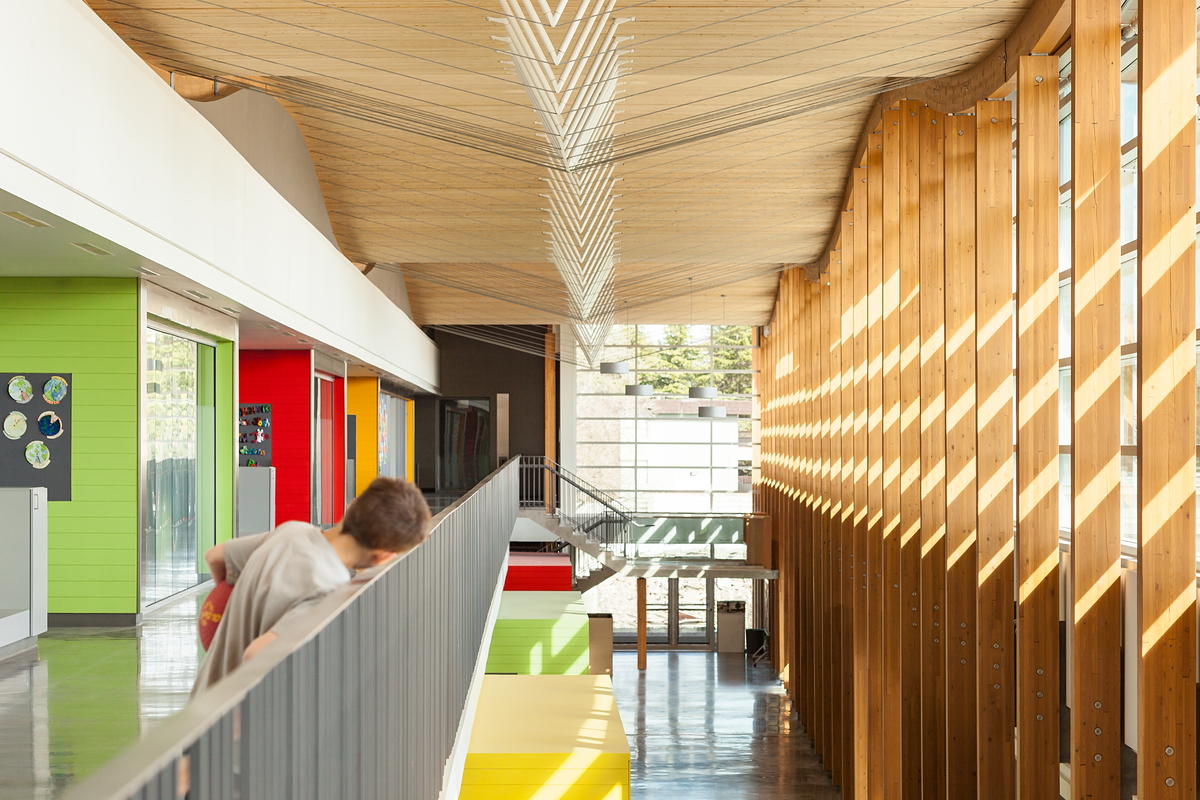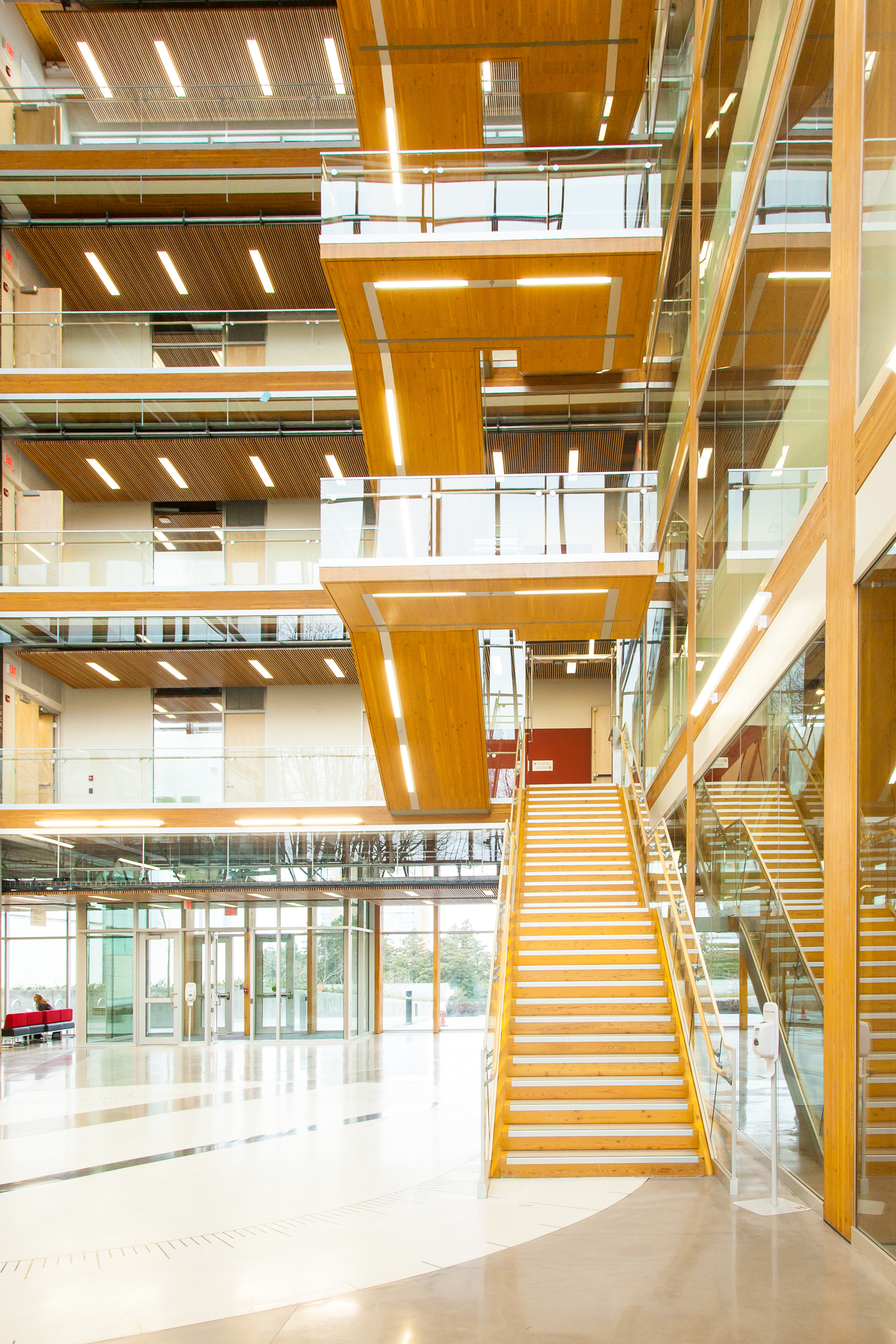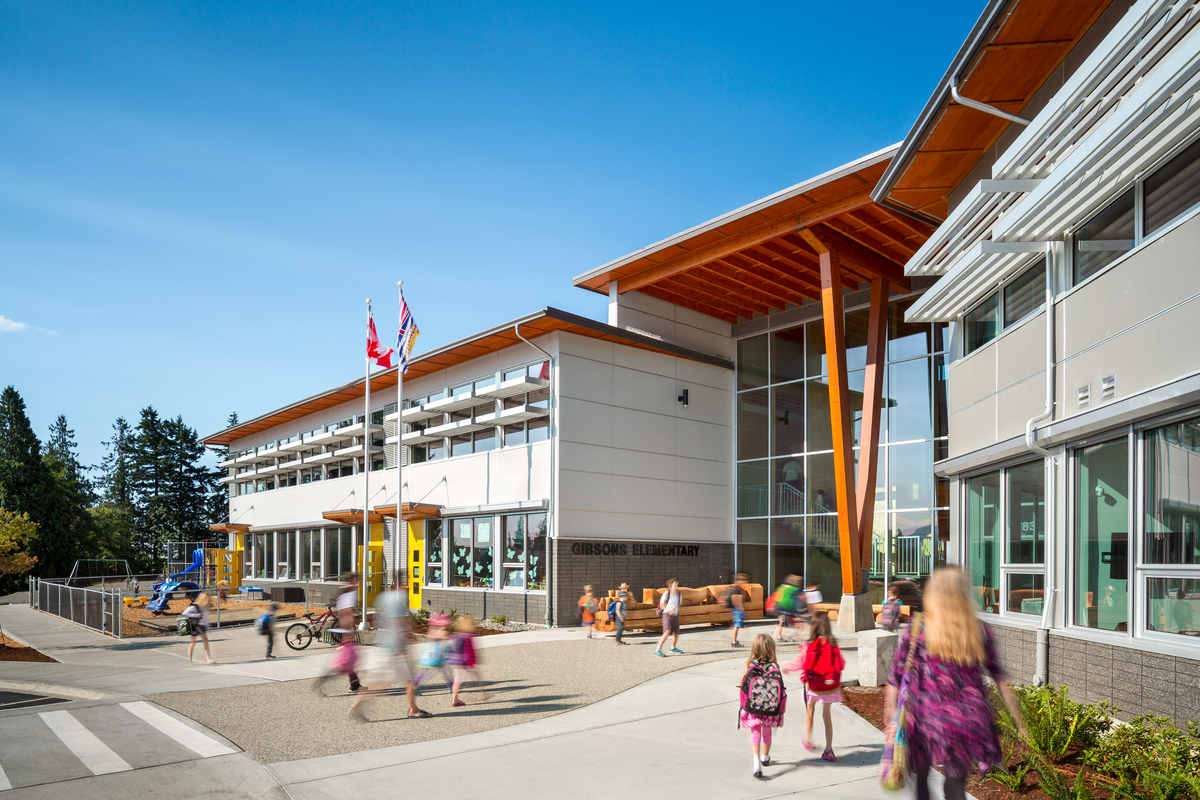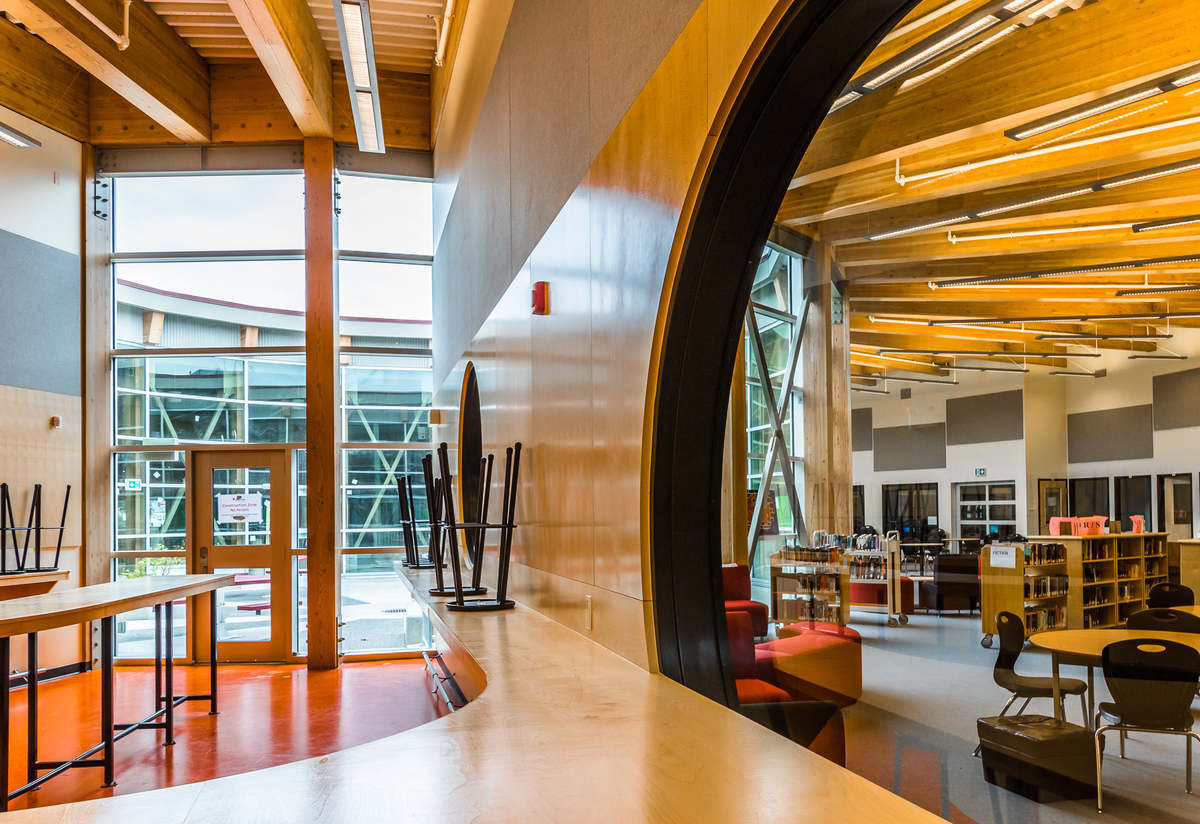Wood’s advantages in learning environments
The mandate of the sustainability movement has expanded from its initial focus on energy conservation and other environmental impacts to include broader issues of human health.
People spend as much as 90 per cent of their time inside buildings, and for children, adolescents and an increasing number of young adults, most of this time is spent either at home or in school. It is clear that the design of our indoor environments is of critical importance to human health—an intuitive conclusion that is now supported by an increasing body of scientific evidence.
Samuel Brighouse Elementary School | Photo credit: BaseTwo Media Inc.



